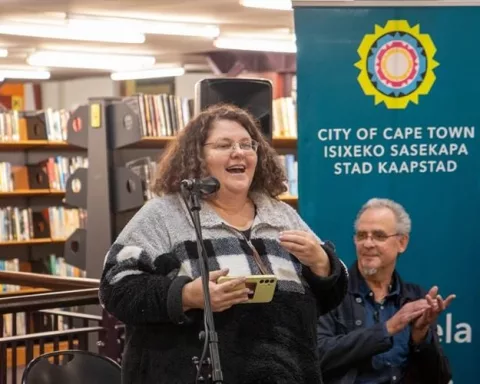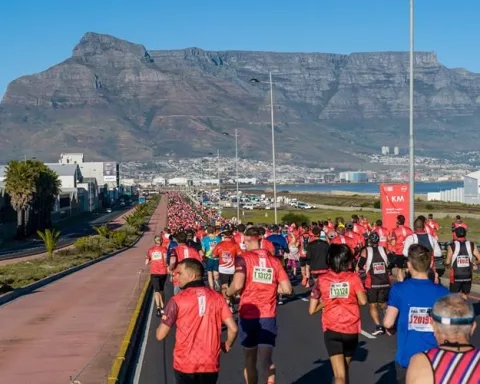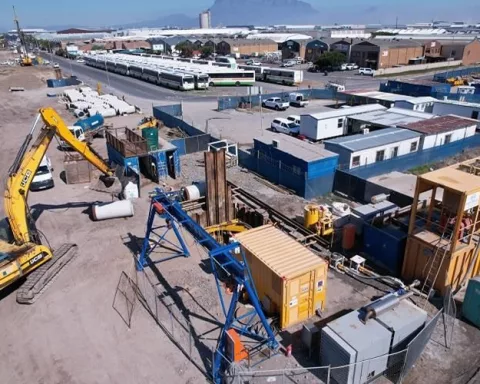The No Man’s Land Parade in Johannesburg is an artistic spectacle, featuring musicians, majorettes, and a colorful array of participants marching through the city’s underprivileged neighborhoods. The parade is a unique collaboration between artists and neglected members of society, uniting disparate groups in public spaces. Through its focus on environmental and social issues, the No Man’s Land Parade cultivates a sense of unity and optimism in Johannesburg’s struggling communities, showcasing the resilience and untapped potential of its most marginalized residents.
What is the No Man’s Land Parade in Johannesburg?
The No Man’s Land Parade in Johannesburg is a unique collaboration between artists and the city’s underprivileged residents. Organized by the Centre for the Less Good Ideas, the parade features musicians, majorettes, and a dazzling array of colors marching down a worn Johannesburg street, representing an enchanting fusion of art and social commentary. Through connecting art with neglected members of society, the parade cultivates a sense of unity and optimism in struggling neighborhoods.
A Unique Collaboration in Johannesburg
The lively No Man’s Land Parade in Johannesburg may seem like a typical street celebration, but a closer look unveils an extraordinary partnership between artists and the city’s most underprivileged residents. Featuring musicians, majorettes, and a dazzling array of colors marching down a worn Johannesburg street, this artistic spectacle represents an enchanting fusion of art and social commentary.
The parade is the creative product of the Centre for the Less Good Ideas, co-founded by esteemed South African artist William Kentridge. Recognized for his animated films and illustrations, the 68-year-old artist attended the event wearing his trademark white shirt and Panama hat. Alongside him was choreographer and dancer Sello Pesa, who developed the concept of a carnival procession to commemorate the center’s tenth season.
Situated in the Maboneng district, the core of South Africa’s economic capital, the center occupies a former industrial complex now repurposed into performance spaces and workshops. To organize the parade, Kentridge and Pesa sought assistance from “recyclers” – individuals who sift through waste to find items they can sell for a modest income. Pesa’s goal was to examine the connection between overlooked societies and the art they generate, ultimately uniting disparate groups in public areas.
Stories from the Streets
The procession showcased recyclers from Lesotho and Congolese men employed as security guards or parking attendants. Pesa engaged with these individuals on the streets, where they relayed their stories to him. Alongside them, dancer Teresa Phuti Mojela donned a hand-stitched dress echoing the bright vests of waste collectors. Her attire, embellished with empty bottles and wrinkled paper, acted as a striking reminder of the Earth’s environmental challenges. “It’s hot under my skirt. Like the planet,” she commented.
As the parade began, the recyclers sang a cappella, using inflated bags as percussion instruments and generating beats with their mouths. Spectators, residents, and pedestrians applauded as the procession snaked its way through Johannesburg’s impoverished streets. A feather-hatted musician captivated the crowd with theatrical facial expressions, tossing his baton into the air and dancing in time with the music.
The event’s enthusiasm and vitality evoked memories of a Mardi Gras celebration in New Orleans. As the streets pulsated with joy and color, the procession passed small grocery shops and pavement grills filled with barbecued meat. Temporarily removed from their everyday struggles, the onlookers’ faces glowed with happiness.
Bridging the Gap and Inspiring Change
Although it has a festive ambiance, the No Man’s Land Parade serves a more profound purpose. By connecting art with the neglected members of society, it cultivates a sense of unity and optimism in Johannesburg’s struggling neighborhoods. Sello Pesa’s aspiration of linking marginalized communities with the artistic realm not only honors the resilience of Johannesburg’s inhabitants but also stimulates conversation about the city’s socioeconomic issues.
Additionally, the parade’s focus on environmental matters acts as a stark reminder of the planet’s ongoing crisis. Teresa Phuti Mojela’s stunning trash-inspired outfit is a potent visual representation of our obligation to address climate change and pollution.
In conclusion, the No Man’s Land Parade exemplifies a blend of culture, art, and social consciousness, demonstrating that even the most destitute and disregarded groups can inspire creativity and transformation. By uniting artists, performers, and disadvantaged communities, this extraordinary occasion highlights the resilience and untapped potential of Johannesburg’s most marginalized residents.
What is the purpose of the No Man’s Land Parade in Johannesburg?
The No Man’s Land Parade serves to connect art with neglected members of society, cultivating a sense of unity and optimism in struggling neighborhoods. It also focuses on environmental and social issues, stimulating conversations and promoting change.
Who organizes the No Man’s Land Parade?
The No Man’s Land Parade is organized by the Centre for the Less Good Ideas, co-founded by South African artist William Kentridge and choreographer Sello Pesa.
What is the Centre for the Less Good Ideas?
The Centre for the Less Good Ideas is an organization co-founded by William Kentridge that aims to bring artists and diverse communities together to promote creativity and social change.
Who participates in the No Man’s Land Parade?
The parade features musicians, majorettes, and a colorful array of participants, including recyclers from Lesotho and Congolese security guards and parking attendants.
Where does the No Man’s Land Parade take place?
The parade takes place in Johannesburg’s underprivileged neighborhoods, showcasing the resilience and untapped potential of its most marginalized residents.
What is the significance of the recyclers in the parade?
The recyclers symbolize neglected members of society and demonstrate the connection between overlooked societies and the art they generate.
What is the environmental message of the No Man’s Land Parade?
The parade’s focus on environmental matters acts as a stark reminder of the ongoing climate crisis and pollution. Teresa Phuti Mojela’s trash-inspired outfit is a potent visual representation of our obligation to address these issues.
What is the overall impact of the No Man’s Land Parade?
The No Man’s Land Parade exemplifies a blend of culture, art, and social consciousness, demonstrating that even the most destitute and disregarded groups can inspire creativity and transformation. It promotes unity, optimism, and change in Johannesburg’s struggling neighborhoods.








